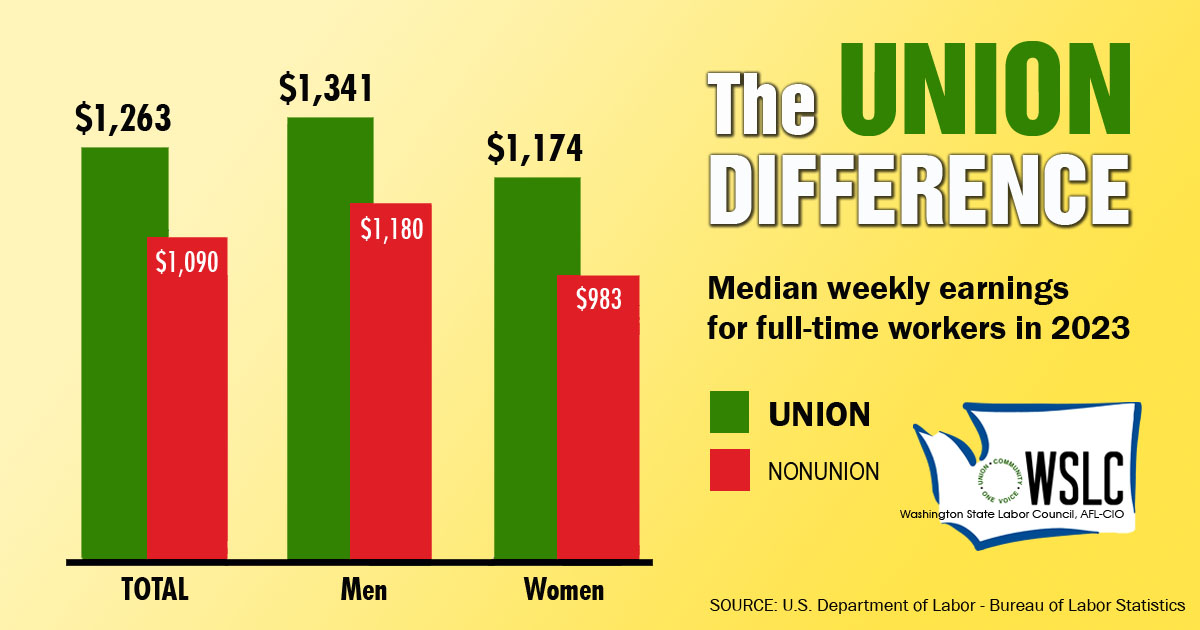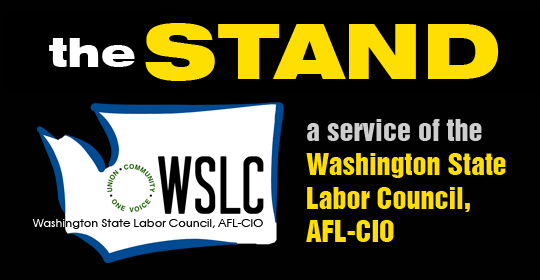SPECIAL REPORTS
Jobless benefits: Saving families, businesses
Imagine a company that does business in every county in Washington state, pumping billions in payroll dollars into our economy. Better still, this company is counter-cyclical, ramping up hiring and payroll when the state economy is struggling.
The rest of the business community and public officials all benefit thanks to increased consumer spending and tax revenues to fund improved public services. So Washington would all go to extraordinary lengths to keep this company healthy and strong, right?
 That “company” exists. It’s Washington’s unemployment insurance system, and in 2010 it pumped more than $4.3 billion into our state economy. But some political and business leaders tend to ignore its benefits — and the many businesses and jobs it has preserved — and focus on decrying its costs.
That “company” exists. It’s Washington’s unemployment insurance system, and in 2010 it pumped more than $4.3 billion into our state economy. But some political and business leaders tend to ignore its benefits — and the many businesses and jobs it has preserved — and focus on decrying its costs.
Washington has the healthiest U.I. system in the nation. After a two-year recession and persistent 9%-plus unemployment that continues to this day, it is sufficiently funded that our state is in a position to approve a major cut in U.I. tax rates, that will save employers hundreds of millions of dollars a year.
In contrast, as of this writing 30 states have U.I. systems that are insolvent. Idaho, for example, has borrowed more than $200 million and is about to extend its tax on employers, already at its maximum, through at least 2016 to cover a bond sale to repay the loan. The U.S. government just started imposing a 4.1% interest charge on arrears, which total more than $42.5 billion for all the delinquent states.
So, which state has a better business climate on this issue? One with responsible tax rates that can pump billions into the state economy and avoid raising taxes when the state economy is struggling? Or one with artificially low taxes that not only pays lower benefits — providing less of an economic safety net for businesses — but also requires a major tax increase amid a recession?
WHAT IS UNEMPLOYMENT INSURANCE?
One reason the U.S. economy spiraled into the Great Depression was that millions of Americans lost their jobs and their ability to pay for the basic goods and services needed to survive. This lack of consumer spending led to even more business closures and more layoffs. And so on.
 That’s why in 1935 the unemployment insurance system was established and it’s largely why America has kept economic recessions from spiraling into depressions since then. Jointly financed through federal and state employer payroll taxes, states manage the programs and determine the benefit levels and taxes necessary to fund them. Those taxes are experience-rated, meaning that employers that lay off workers pay higher taxes, just like employers with high work injury rates pay higher workers’ compensation premiums.
That’s why in 1935 the unemployment insurance system was established and it’s largely why America has kept economic recessions from spiraling into depressions since then. Jointly financed through federal and state employer payroll taxes, states manage the programs and determine the benefit levels and taxes necessary to fund them. Those taxes are experience-rated, meaning that employers that lay off workers pay higher taxes, just like employers with high work injury rates pay higher workers’ compensation premiums.
The U.I. system is designed not only as a safety net for families who’ve lost their sources of income through no fault of their own, but also as a safety net for businesses. It provides economic stability in times of recession, like the current one.
U.I. also helps businesses maintain a stable, skilled workforce during economic downturns, instead of forcing laid-off workers from their homes or to other states in search of employment. Boeing and other companies that historically have laid off workers during downturns and recalled them when conditions improve have especially benefited.
UNEMPLOYMENT INSURANCE: THE BEST STIMULUS
 Our U.I. system provides temporary partial wage replacement for struggling families, helping them pay rent and keeping food on their tables. In 2010, as the most severe recession in a generation ended, about $4.3 billion in benefits were paid out in our state.
Our U.I. system provides temporary partial wage replacement for struggling families, helping them pay rent and keeping food on their tables. In 2010, as the most severe recession in a generation ended, about $4.3 billion in benefits were paid out in our state.
The U.S. Department of Labor estimates that for every $1 of benefits, $2 of purchasing power is created in the economy. Unemployment benefits are the best kind of economic stimulus because recipients don’t save their money, they immediately spend it, circulating money into local economies. That’s why its economic impact is magnified.
In 2010, our unemployment insurance system created more than $8.6 billion in purchasing power on Main Street, Washington:
- $127 million in Benton County
- $212 million in Whatcom County
- $221 million in Yakima County
- $260 million in Thurston County
- $383 million in Clark County
- $499 million in Spokane County
- More than $1 billion each in Pierce and Snohomish counties
- More than $2.5 billion in King County.
This money is saving jobs and businesses. That’s what it’s designed to do, and that’s what it’s doing every day.
WHAT DOES IT COST?
Employers in Washington pay an average tax rate of 1.26%, which ties us for the 5th highest rate in the nation, according to 2010 U.S. Dept. of Labor data. (Neighbors Oregon and Idaho both had higher rates at 1.66% and 1.92%, respectively.) But most employers here pay less than that 1.26% rate. According to the state Department of Employment Security, about half (48%) of Washington employers pay 0.95%, the lowest.
WHAT’S NEW IN 2011?
“The employer coalition’s tax model is a pay-as-you-go system that would dramatically increase rate volatility for employers and overall system instability… What that means is that during a recession or economic downturn employers’ UI premiums would increase dramatically as they are forced to lay off workers.”
The Washington State Labor Council wrote that in its 2003 Legislative Report about the new U.I. tax system supported by a coalition of business organizations and approved by the Legislature that year. It is the U.I. tax system still in place today — and the prediction above has proved prescient.
Our experience-rated pay-as-you-go tax system requires U.I. rate increases when unemployment is high. As more and more unemployed people began drawing benefits since 2009, U.I. rates increased each successive year (as they have in states across the nation), making it harder for employers to hire folks back. That’s why, in 2011, Washington businesses face an average 36% rate increase, unless the Legislature takes action to prevent it.
The good news is that our state’s U.I. Trust Fund is in healthy shape and has a $2 billion, 14-month reserve. That means the 2011 State Legislature, which is poised to slash $5 billion worth of public jobs and services in every area of state government, is in a position not only to prevent the 2011 U.I. tax increase, but also to have more than half of all employers pay less in 2011 than they did in 2010. Remember, this is happening at a time when most states are raising U.I. tax rates not only to cover benefits during the nation’s jobless recovery, but in the case of 30 states with insolvent systems, to pay back money borrowed from the federal government to pay past benefits.
As of this writing, at the request of Gov. Chris Gregoire, the Legislature is poised to approve a $300 million rate decrease in 2011 for state businesses.
 United for Washington Families, a coalition of labor and community organizations advocating for families suffering from unemployment, is proposing to balance those U.I. tax cuts with benefit improvements. The coalition supports a $15 per child weekly benefit increase to assist struggling families. Making that change would secure $98 million in federal U.I. modernization incentive funds that would pay nearly half the cost over the next six years. The remaining cost will be about $100 million, or one-third what businesses will get in lower tax rates.
United for Washington Families, a coalition of labor and community organizations advocating for families suffering from unemployment, is proposing to balance those U.I. tax cuts with benefit improvements. The coalition supports a $15 per child weekly benefit increase to assist struggling families. Making that change would secure $98 million in federal U.I. modernization incentive funds that would pay nearly half the cost over the next six years. The remaining cost will be about $100 million, or one-third what businesses will get in lower tax rates.
The Washington State Labor Council hopes that state lawmakers take this, or some other alternative approach to balance its concern for struggling businesses with concern for struggling families. Given the demonstrated positive economic impact of U.I. benefits, such balanced legislation could be a win for business, a win for working families, and a win for the economy of this state.
This special report was prepared by David Groves of the Washington State Labor Council, AFL-CIO.





